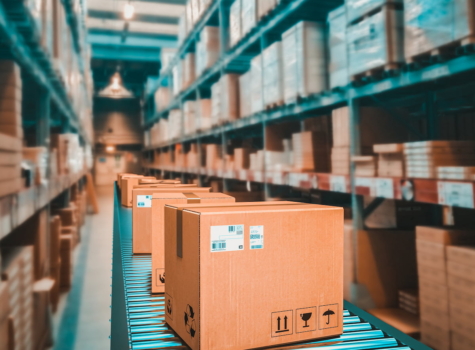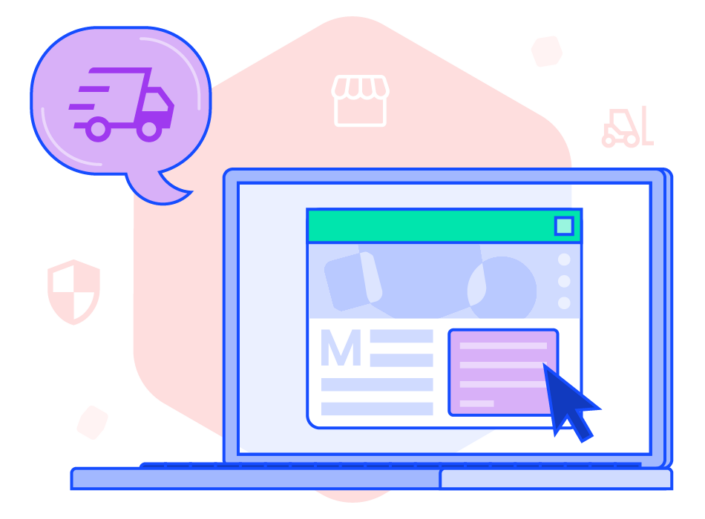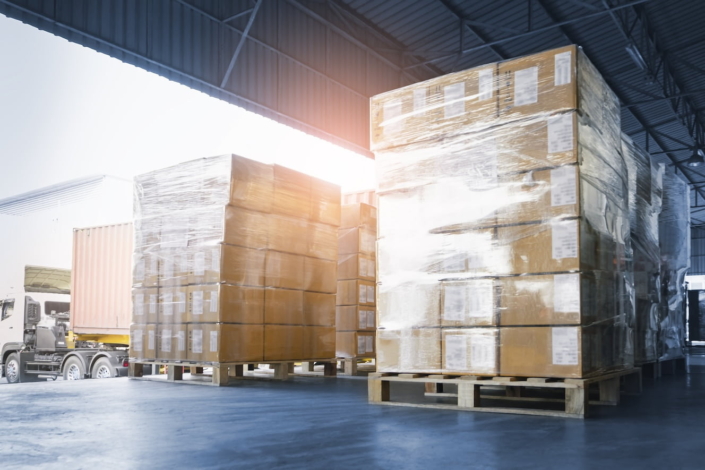Outsourcing logistics is a great way to free up time for your business, fulfill orders more efficiently, and improve customer satisfaction. But many organizations find it challenging to choose the right solution. It doesn’t help when acronyms are thrown into the mix. 3PL? 4PL? What do they mean, and what’s the difference?
In this article, we’ll go over the definitions of each, review some pros and cons, and explain the key differences between 3PLs and 4PLs.
What is a 3PL?
A 3PL (third-party logistics provider) is an outsourced partner that handles the fulfillment process from start to finish, taking care of hands-on tasks like picking, packing, and shipping orders. Working with a 3PL is a great idea for ecommerce businesses that need a bit of additional support to keep fulfillment running smoothly.
While 3PLs might offer different services, these are some of the most common:
- Warehousing. 3PLs own and operate warehouses or distribution centers. These centers are strategically located for fast deliveries, with layouts optimized for efficient picking.
- Inventory management. 3PLs can help manage inventory levels, track stock movements, and make sure there’s enough stock available to meet customer demands.
- Packaging. 3PLs choose the appropriate packaging size and material for each product, ensuring that everything stays safe during transportation.
- Shipping and transportation. When it’s time to ship orders, the 3PL generates shipping labels and arranges carrier pickups. They optimize routes so orders travel to customers as quickly as possible.
- Returns management. Many 3PLs take care of returns. They handle return authorizations; inspect returned products; and restock, recycle, or dispose of them.
- Customer service. Some 3PLs offer customer service support, helping address questions and resolve problems.
While any business can benefit from partnering with a 3PL, industries with specific shipping requirements often find them especially useful. A few examples include:
- Pharmaceutical
- Medical
- Retail
- Food
- Cosmetics
- Technology
- Manufacturing
- Construction
Advantages of 3PL
With the help of a 3PL, SMBs (small and medium-sized businesses) can grow more quickly. Not only do they expand their reach, but they also keep customers satisfied with quick, accurate deliveries.
A Gartner survey found that almost two-thirds of respondents said working with a 3PL had a positive impact on their competitiveness. Here are just a few advantages of partnering with a third-party logistics provider:
- Increased customer satisfaction. When shopping online, customers want their purchases to arrive on time and in good condition—and 3PLs make it happen. When you integrate your order management system (OMS) with a 3PL, new orders on your website go straight to their system. This allows them to pick, pack, and ship the order in no time.
- Wider reach. 3PLs have distribution centers strategically located across the United States and even across the globe, allowing them to deliver to locations your business might struggle to reach. If you’re looking to expand your geographical reach, 3PLs are perfectly positioned to help you get there.
- Scalability. At a certain stage of growth, in-house order fulfillment might become cost- and time-prohibitive. Investing in warehouse space, equipment, and staff is expensive. 3PLs provide an alternative way to scale by providing the resources, facilities, and expertise that you lack. They handle order fulfillment, and you have more time to grow your business through product development, marketing, and sales.
Disadvantages of 3PL
Of course, no system is perfect. Partnering with a 3PL can have disadvantages, including lack of control, dependency issues, and limited business understanding.
- Lack of control. When you outsource any function, you have to relinquish some of your control. If the 3PL encounters issues or inefficiencies, it might be hard for you to intervene. Separated from them by time and distance, you can’t always take a hands-on approach to quality control.
- Dependency issues. When you work with a 3PL, you depend on them to get your orders shipped on time, to the right place. If they encounter disruptions or financial challenges, your supply chain will be affected—and there won’t be anything you can do about it. Additionally, it can take months to transition to a new 3PL provider or in-house fulfillment.
- Lack of specialized business understanding. While 3PLs are experts in logistics, they don’t necessarily understand your business’s unique needs, goals, products, or customer preferences. If you’re looking for an outsourced partner with a deeper understanding of your organization, you may want to consider a 4PL instead.
(Curious about the costs associated with a 3PL? Learn more here.)
What is a 4PL?
4PLs (fourth-party logistics providers), also known as LLPs (lead logistics providers), oversee the supply chain from start to finish. They don’t usually own assets like distribution centers; instead, they help businesses develop comprehensive logistics strategies. As one logistics executive pithily says, a 4PL is “one-stop supply chain management.”
- Strategic planning. 4PLs create strategies to align the supply chain with overall business goals. These long-term strategies encompass sourcing, distribution, risk management, and more.
- Transportation management. 4PLs coordinate transportation, select the best carriers, optimize routes, and make sure goods are moved quickly and cost-effectively.
- 3PL management. 4PLs develop and manage relationships with one or more 3PL partners. They serve as a central point of contact, communicating with each partner to keep fulfillment running smoothly.
- Supplier collaboration. 4PLs collaborate with suppliers and vendors to source materials, components, and products. They help businesses expand their supplier base to avoid negative results if one supplier suffers delays.
- Inventory management. To prevent stockouts and overstock situations, 4PLs manage inventory levels, optimize stock replenishment, reduce excess stock, and align inventory with demand.
- Technology integration. All of the vendors, supplies, and carriers that 4PLs manage have data. The 4PL leverages technology to bring this data together, providing enhanced visibility and real-time tracking.
Advantages of 4PL
For the right type of business, 4PLs come with lots of benefits. These include:
- One point of contact. As your business expands and you throw multiple 3PLs into the mix, as well as other vendors, it can get tricky to balance everything. A 4PL serves as a single point of contact—you communicate with them, and they pass the message on to the other partners you work with.
- Full visibility. This benefit is closely tied to the previous one. Just as the 4PL is the single point of contact between you and your vendors, they also provide a single source of truth when it comes to data. The 4PL compiles your inventory information, order and shipping information, and more so you can better understand how your supply chain is performing.
- Specific solutions. Unlike a 3PL, a 4PL is able to become an expert on your business. This allows them to offer solutions that are tailored to your unique situation, finding the best combination of value and service.
Disadvantages of 4PL
We’ve gone over the advantages of 4PLs—but what are some disadvantages? You should be aware of these potential cons.
- Higher cost. Because 4PLs do much more than 3PLs, they charge a lot more. If you’re a smaller business, the cost of a 4PL could be a significant barrier. If you don’t work with multiple vendors, carriers, and suppliers, the price point of a 4PL just won’t be worth it.
- Lack of control over logistics process. When you work with a 4PL, you put your supply chain into their hands. According to Matthew Becket, this presents a problem: “While during good times this may provide cost and efficiency benefits to shippers, when crisis strikes, they may be left scrambling to find alternatives if the promise of 4PL does not come to fruition.” In other words, with a 4PL running the logistics show, it might be difficult to intervene quickly when issues arise.
- Hard to switch back to in-house. If a 4PL requires a long-term contract, you’ll be locked into a partnership with them. And if you decide to bring logistics back in-house, you could face significant challenges. After depending on the 4PL’s expertise and systems for a long time, it requires lots of time and resources to transition away.
Difference between 3PL and 4PL
4PL vs. 3PL—what’s the difference? While 3PLs handle physical logistics tasks, 4PLs take a more comprehensive approach to supply chain management. They act as a single point of contact for managing an organization’s logistics, including managing the relationships with 3PLs.
Order fulfillment
3PLs take a hands-on approach to order fulfillment. They own and operate their own distribution centers, where they store inventory, pick and pack orders, and ship them out. The 3PL will handle packaging, kitting, and even returns.
On the other hand, 4PLs don’t usually own physical assets like distribution centers, and they don’t directly handle order fulfillment. Instead, they manage one or more 3PLs, putting an extra degree of separation between you and your outsourced logistics partners.
Supply chain optimization
Supply chain optimization is where 4PLs really shine. They have a holistic approach, moving beyond individual functions to build a cohesive and efficient supply chain. They act as strategic partners to find weak points in your supply chain and strengthen them.
3PLs have a more narrow focus. As experts in fulfillment, they streamline the picking, packing, and shipping processes. While 3PLs take care of your deliveries, they can’t help fix issues anywhere else in the supply chain.
Customer communication
Customer communication falls to 3PLs rather than 4PLs. Because 3PLs are directly involved in preparing and sending customer orders, they often handle communication related to order status, shipment tracking, and delivery updates. If a delivery goes wrong, the 3PL helps address customer concerns and find a solution.
On the other hand, 4PLs take on a more strategic communication role. Rather than communicating with customers, they facilitate communication among different partners in the supply chain, ensuring that they’re aligned and informed about changes, disruptions, and optimization efforts.
Day-to-day tasks
While 3PLs handle hands-on operational tasks, 4PLs orchestrate the entire supply chain ecosystem for maximum efficiency and value.
3PLs concentrate on executing specific tasks within the supply chain, such as transportation, warehousing, and distribution. Their primary responsibilities revolve around physically moving goods and managing inventory. In contrast, 4PLs are engaged in higher-level functions that involve planning, coordination, and collaboration.
Choosing what’s right for your business
Choosing the right logistics model is crucial for your success. So how do you know when to choose a 3PL vs. a 4PL? We’ve broken it down for you.
When to consider a 3PL
A 3PL is the best choice for SMBs that are growing quickly. Working with a 3PL can help these businesses scale more quickly and cost-effectively than they’d be able to on their own.
Consider a 3PL if your business:
- Is an SMB experiencing rapid growth
- Needs more time and resources to focus on core operations
- Has limited internal logistics resources
- Needs flexibility to scale up or down based on customer demand
When to consider a 4PL
4PLs are best suited for enterprise-level businesses that need a comprehensive supply chain management solution.
Consider a 4PL if your business:
- Is a large enterprise with complex supply chain networks
- Requires end-to-end supply chain management
- Needs to coordinate multiple 3PL partners
- Wants to enhance supply chain efficiency
- Is looking to leverage technology for data-driven decision-making
Find the right fulfillment solution
Whether you want to outsource your fulfillment or keep it in-house, we can point you in the right direction. EasyPost’s suite of APIs is flexible enough to meet your business needs, and we partner with some of the best 3PLs out there.
Talk to a shipping expert today and let us help you find the right fulfillment solution.




